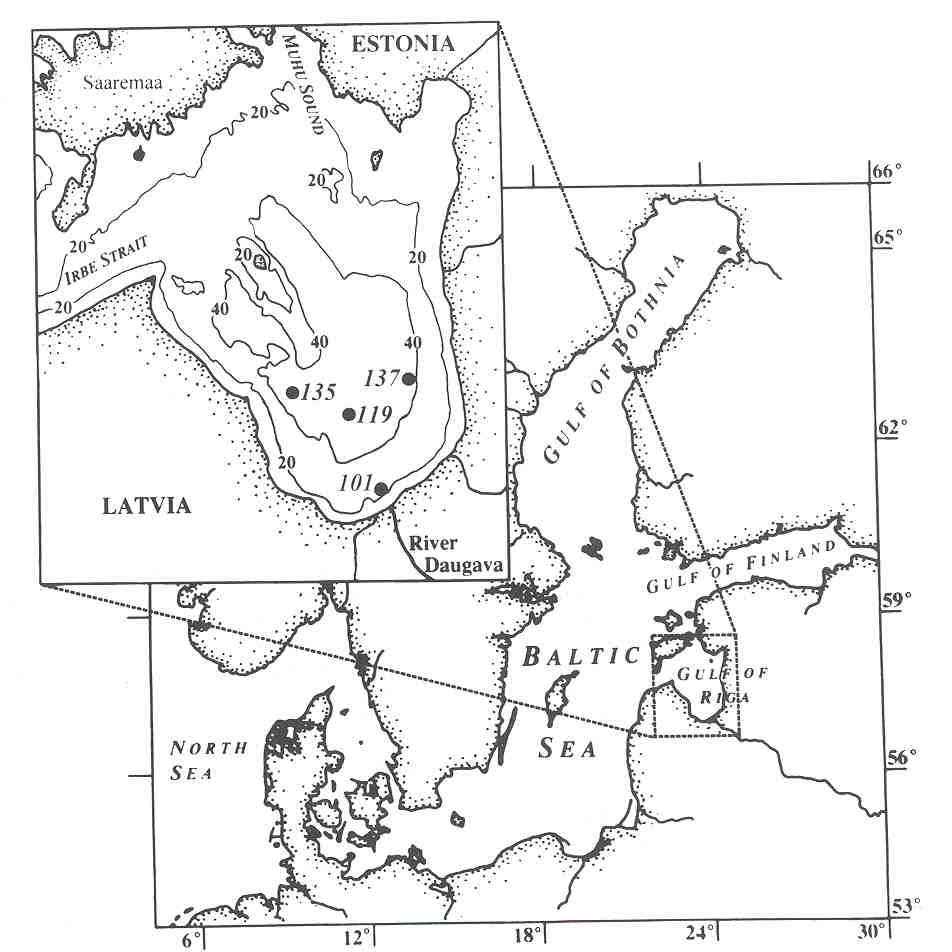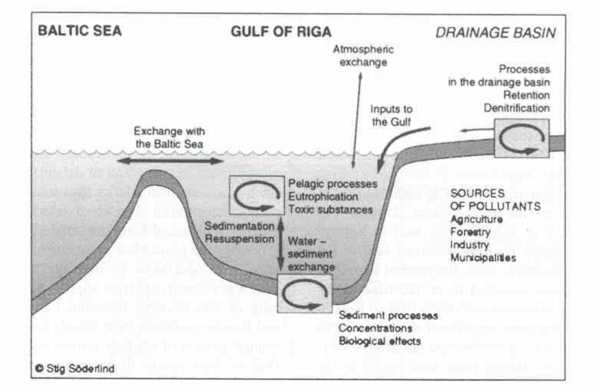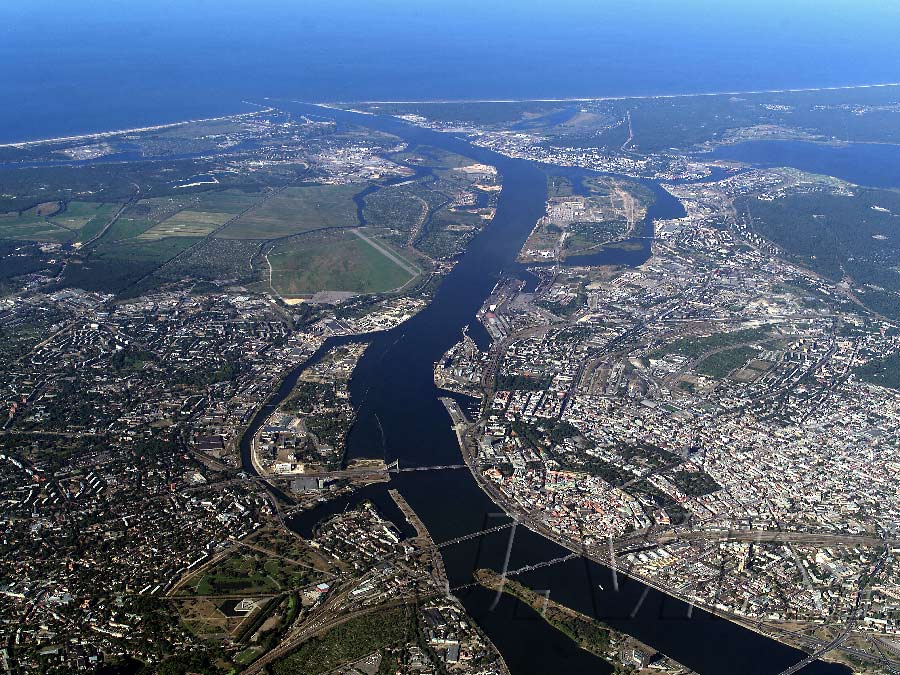


 |  |  | 19.1 Introduction |
Quantitative estimates of the fluxes and dynamics in the nutrient load on marine environments, their distribution and channelling through the food web and the effect on the increase of new production, are fundamental and constitute a prerequisite for the planning of actions for water protection measures. The Gulf of Riga is no exception. The Gulf is a semi-enclosed part of the eastern Baltic Sea, surrounded by Estonia and Latvia and has one major outlet, the Irbe Straight Sound, and one minor one, the Muhu Sound. The Gulf of Riga has a surface area of 19,000 km2, is up to 67 m deep, has a relatively simple topography and a volume of 420 km3 (Figure 1). The Gulf is eutrophicated and most of the pollution loads in the Gulf can be attributed to human activities in the drainage basin, which covers 135,700 km2, or more than seven times the surface area of the Gulf itself. In pelagic environments the fate of organic matter produced by an increased supply of nutrients, the regulation of vertical flux and in particular the pelagic-benthic coupling are not well known in general, let alone in the Gulf of Riga. Since the beginning of this century Estonian, Latvian, Lithuanian and Russian scientists have already carried out a substantial body of work in various disciplines in the Gulf of Riga and its drainage area (summarised by Ojaveer [349]). From 1993-1997 Nordic and Baltic scientists joined forces in an international project, the `Environmental Research in the Baltic Sea' (web site?), also referred to as the `Gulf of Riga Project' (GoR). The objective was to study environmental problems in the Gulf and its drainage area, and to determine their impact on the rest of the Baltic Sea in general and the Baltic Proper in particular (Figure 2).


The investigations reviewed here aim at to understand the Gulf of Riga as an ecosystem by analysing
This chapter rests upon 14 publications from the project `Pelagic eutrophication and sedimentation' [492].

 |  |  | 19.1 Introduction |